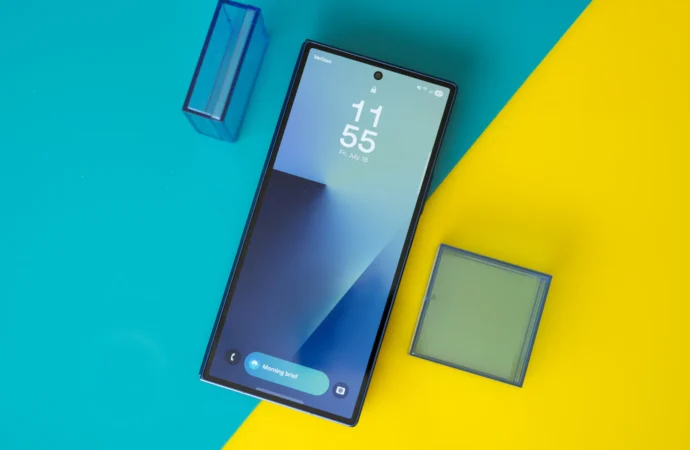On the Samsung side, recently the company has been aggressively updating software features and refining its foldable hardware (Fold7, Flip7), alongside pushing forward its AI-enabled user experience through One UI 8 and deeper security enhancements. The rollout of One UI 8 begins with the Galaxy S25 series and will expand to other Galaxy devices (S24,
On the Samsung side, recently the company has been aggressively updating software features and refining its foldable hardware (Fold7, Flip7), alongside pushing forward its AI-enabled user experience through One UI 8 and deeper security enhancements. The rollout of One UI 8 begins with the Galaxy S25 series and will expand to other Galaxy devices (S24, foldables, tablets) in October. The update brings in multimodal artificial intelligence capabilities so that devices can recognize visual, auditory, and textual inputs—this results in more intelligent proactive suggestions, real-time translations, and tools for AI-assisted writing and drawing. For example, there is a new feature allowing users to generate “pet portraits,” adaptive clocks that change appearance, and Gemini Live on Flip phones (hands-free use). Security is also heavily emphasized: Samsung introduces Knox Enhanced Encrypted Protection (KEEP) for app-specific secure storage, Knox Matrix, which automatically logs out devices if a serious threat is detected, and a “Secure Wi-Fi” feature that uses post‐quantum cryptography to guard data on public networks. All told, this is not just feature polishing: it signals Samsung’s intention to stay ahead in securing mobile device trust at a moment when cybersecurity threats are accelerating.
Particularly for foldable devices (Galaxy Z Fold7 and Flip7), One UI 8 brings enhancements to DeX (Samsung’s desktop-mode interface): users can now place home screen widgets, pin apps to the DeX task bar for quick access, and have improved control of keyboard and mouse behavior when using external displays. The Now Bar (a UI element) also gets improvements: better media navigation and real-time stock alerts (e.g. via Google Finance). These upgrades reflect user demand: foldables have often been criticized for compromise in productivity vs full laptops or desktops, and these changes narrow that gap. The hardware of Fold7 and Flip7 already had strong features (large internal displays, high-performance chipsets, premium build), but these OS-level improvements make them more usable not just for showing off but for serious multi-tasking.

Samsung is also trying to maintain or improve longevity and customer value: support windows for operating system updates and security patches have been extended (for example, the Galaxy Z Fold7 comes with a promise of up to seven years of software and security updates) . This matters especially for users who keep phones for longer, such as older people: better support reduces worry about obsolescence, security vulnerabilities, and forced upgrades.
On the business and market side, Samsung is trying to differentiate via a combination of design, AI, and user experience rather than just raw specs. The push for post-quantum secure wireless (Secure Wi-Fi), stronger encryption, threat detection reflects increased consumer concern over privacy and safety. The massive competition with Apple’s iPhones (esp. with the new lineup and visual overhaul in iOS 26) means Samsung needs to both match and exceed in differentiators. The foldable line (Z Fold7, Flip7) is clearly becoming central to that strategy—not niche crossover but serious alternatives. For users, this means that more devices will feel “future ready,” in terms of both hardware lifespan and software-security horizon.
For older users, the improvements in security tools, more stable long term software updates, better displays, and more user-friendly UI enhancements (widgets, clock visibility, multitasking via DeX) all help. Foldables now being closer to using external displays, better keyboard/mouse integration means less strain for people who need larger surfaces, better accessibility, and more flexibility. But there are trade-offs: foldables still are more costly, more delicate mechanically, and battery life under heavy productivity or display usage remains something many users track closely. Another area to watch is how Samsung handles firmware stability with One UI 8, and how well secure features perform in real world use without negatively impacting battery or performance. Also, how carriers and accessory makers adapt to new features (e.g. Gemini Live, adaptive clocks) will affect user satisfaction.

















Leave a Comment
Your email address will not be published. Required fields are marked with *